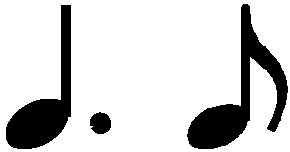



Issues : Dotted or even rhythm
|
b. 44-53
|
composition: Op. 28 No. 24, Prelude in D minor
..
The evenly spaced three notes in the 2nd half of b. 44, 46, 48, 50, 52 and 53 suggest that they were initially supposed to be quavers; the last one was changed to a semiquaver already in the written text. The gaps themselves are a foundation too fragile for such a conclusion; however, one can indicate a few other arguments in favour thereof:
category imprint: Corrections & alterations; Source & stylistic information issues: Corrections in A , Main-line changes , Dotted or even rhythm |
|||||
|
b. 46
|
composition: Op. 25 No 11, Etude in A minor
..
Based on the fact of writing the part of the L.H. under the semiquavers of the R.H., the equal quavers in GC (→GE) are a result of a mistake of the copyist who forgot to add the dot extending b category imprint: Differences between sources issues: Errors of GC , Dotted or even rhythm |
|||||
|
b. 47-48
|
composition: Op. 2, Variations, complete
category imprint: Differences between sources; Corrections & alterations issues: Dotted or even rhythm |
|||||
|
b. 55
|
composition: Op. 30, Mazurka in D♭ major
..
In the main text we give the FC (→GE) version. Although in analogous bars 49, 51 and 53 the second note is a semiquaver, the g2 quaver does not seem to be a mistake – together with the e2 note (prolonged due to the fact that it was played before), it is the quaver that constitutes an augmented version of the dotted rhythm opening the motif ( category imprint: Differences between sources issues: Errors in FE , Dotted or even rhythm |
|||||
|
b. 61
|
composition: Op. 26 No 1, Polonaise in C♯ minor
..
The change of the rhythm introduced in the proofreading of FE1 includes all features of a Chopin improvement. category imprint: Differences between sources |



 and semiquaver beam.
and semiquaver beam.

 ). This rhythmic extension also impacts the next bar, which opens with a minim, and not with a crotchet. The semiquaver in
). This rhythmic extension also impacts the next bar, which opens with a minim, and not with a crotchet. The semiquaver in 
